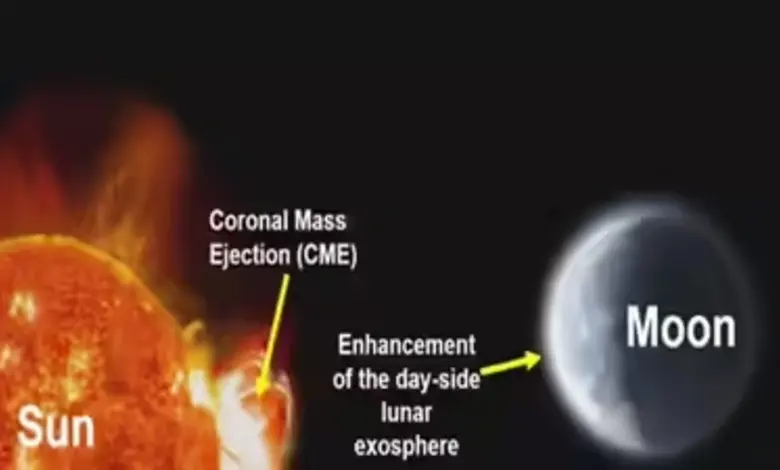In a pioneering feat for space science, India’s Chandrayaan-2 lunar orbiter has recorded the inaugural direct evidence of solar coronal mass ejections reshaping the Moon’s fragile atmosphere, according to the Indian Space Research Organisation (ISRO). The discovery, announced on Saturday, relied on the orbiter’s Chandra’s Atmospheric Composition Explorer-2 (CHACE-2) instrument and revealed a dramatic rise in exospheric pressure and density during the solar event.
The observations captured a more than tenfold jump in the concentration of neutral atoms and molecules—termed “number density”—in the Moon’s dayside exosphere upon impact from the coronal mass ejection (CME). This empirical data aligns precisely with prior theoretical predictions, marking the first time such an influence has been empirically verified.
“This increase is consistent with earlier theoretical models, which predicted such an effect, but CHACE-2 onboard Chandrayaan-2 has observed it for the first time,” ISRO stated.
A coronal mass ejection represents a colossal expulsion of plasma and magnetic energy from the Sun’s corona, its outermost atmospheric layer. These eruptions propel high-velocity particles, predominantly hydrogen and helium ions, across the solar system. While Earth’s magnetic shield deflects much of this onslaught, the Moon—lacking both a substantial atmosphere and a protective magnetosphere—remains vulnerably exposed to such solar dynamics.
The serendipitous detection unfolded on May 10 of the previous year, amid a barrage of CMEs directed at the lunar surface. The onslaught dislodged surface atoms, propelling them into the exosphere and causing a transient spike in its density and pressure.
ISRO emphasized that these findings illuminate the interplay between solar variability and lunar conditions, providing essential guidance for prospective human outposts and research facilities on the Moon. Intense solar episodes like these could transiently disrupt the lunar surroundings, presenting hurdles for sustained habitation.
The Chandrayaan-2 endeavor, India’s sophomore lunar probe, lifted off on July 22, 2019, from Sriharikota via the GSLV-MkIII-M1 launcher. Equipped with eight specialized instruments to probe the Moon’s terrain, exosphere, and mineralogy, the mission encountered a setback when the Vikram lander severed contact on September 7, 2019, during descent. Nevertheless, the orbiter persists in its 100-km-high elliptical path, yielding critical data for over five years. Among its tools, CHACE-2 focuses on mapping the exosphere’s elemental makeup and fluctuations.
This milestone advances comprehension of space weather’s lunar ramifications, with ripple effects for upcoming explorations.
